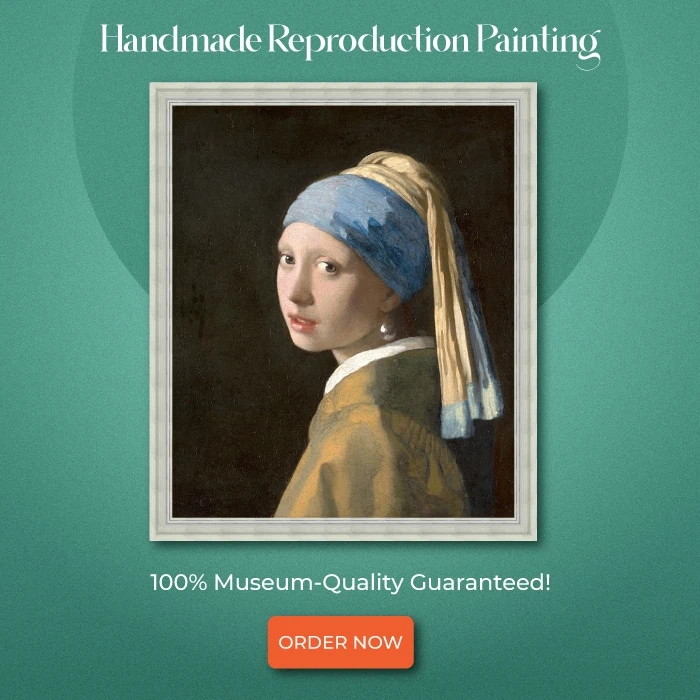Who are Dadaists?
Dadaists are those who belong to the Dada art movement and whose artwork reflects the principles of Dadaism.
“Dadaism” is a term for meaningless nonsense that derives from a French name for a hobby horse.
Informally established in Zurich in 1916, the Dada movement was started by a group of artists who were opposed to the horrors of the First World War.
Hugo Ball, a theater critic, founder of Cabaret Voltaire, the producer of the first Dada evenings, is credited with marking the official beginning of Dadaist artists.
The mocking nightclub welcomed many Dada artists and served as their driving force, attracting many famous painters who made art history.
Here, we’ll study the artists of Dadaism who escalated the Dada art movement. Plus, we’ll talk about their renowned works of art with a consciousness of history.
Table of contents
- 1. Marcel Duchamp, Fountain, 1917
- 2. Hans Arp (Jean), Shirt Front and Fork, 1922
- 3. Man Ray, Le Violon d’Ingres, 1924
- 4. Hannah Hoch, Cut with the Kitchen Knife Through the Last Weimar Beer-Belly Cultural Epoch in Germany, 1919
- 5. Max Ernst, “Two Children Are Threatened by a Nightingale,” 1924
- 6. Kurt Schwitters, Construction for Noble Ladies, 1919
- 7. Francis Picabia, Very Rare Picture of Earth, 1922
- 8. Otto Dix, Skat Players, 1920
- 9. Raoul Hausmann, The Spirit of Our Time, 1919
- 10. Andre Breton, Egg in the church or The Snake, 1932
- 11. Marcel Janco, Mask, Portrait of Tzara, 1919
- 12. John Heartfield, Cover for Der Dada, “The Tire Travels the World”, 1920
- 13. Hugo Ball, Costume of Hugo Ball at his reciting of the Sound Poem, ‘Karawane’, 1916
- 14. George Grosz, A Funeral: Tribute to Oskar Panizza, 1918
- 15. Tristan Tzara, Contents, Dada 3, 1917
- Hey Folks!
- FAQs
1. Marcel Duchamp, Fountain, 1917

Henri Robert Marcel Duchamp’s (1887–1968) artworks drew inspiration from Dada, Cubism, and conceptual art.
The Society of Independent Artists’ first American exhibition included Fountain, a readymade dada sculpture that served as a gauge for the group’s hospitality.
In opposition, Duchamp resigned from the board when board members decided to ban the artwork from the show.
He was a founding member of the Dada movement who challenged common wisdom with the belief that actual touch was essential for the creation of an artwork.
With its prominence in the 1960s, his work is one of the earliest examples of conceptual art.
“Fountain” was believed to be one of the pieces that represented art in postmodernism.
The fact t hat it became artwork is the primary reason for its success.
2. Hans Arp (Jean), Shirt Front and Fork, 1922
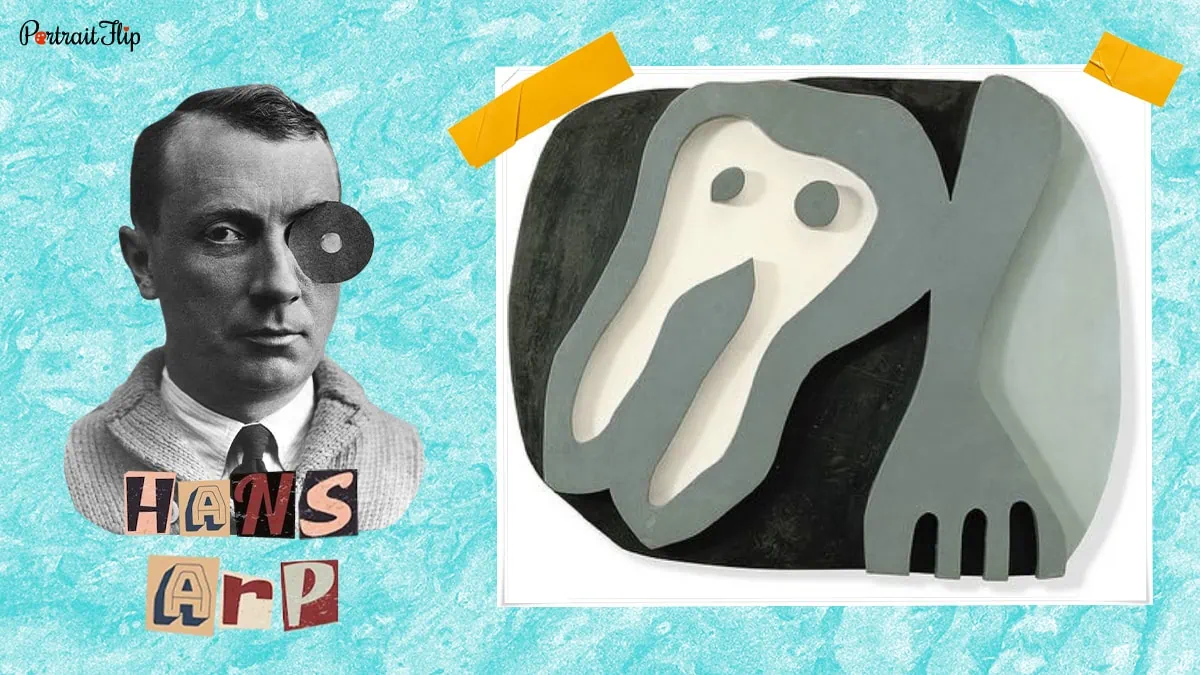
One of the most famous artists of Dadaism, Hans Arp (1886–1966, recognizably familiar), could turn anything into art.
Hans was a French-German painter, sculptor, collage artist, and poet best known for his biomorphic sculptures made of stone, bronze, plaster, and other materials.
His work frequently explores themes of transformation, growth, fecundity, and metamorphosis.
In the Dadaist piece Shirt Front and Fork, a recognizable figure is shown in an unfamiliar setting.
Images of a fork on the right and an elongated tooth on the left, in black, gray, and white, evoke a variety of connections that are eventually unresolved.
With this transitional painting, Arp joined the Dada group and participated in a surrealist show.
After producing more than 61 pieces of art and winning various awards, he became known as one of the artists of Dadaism.
3. Man Ray, Le Violon d’Ingres, 1924
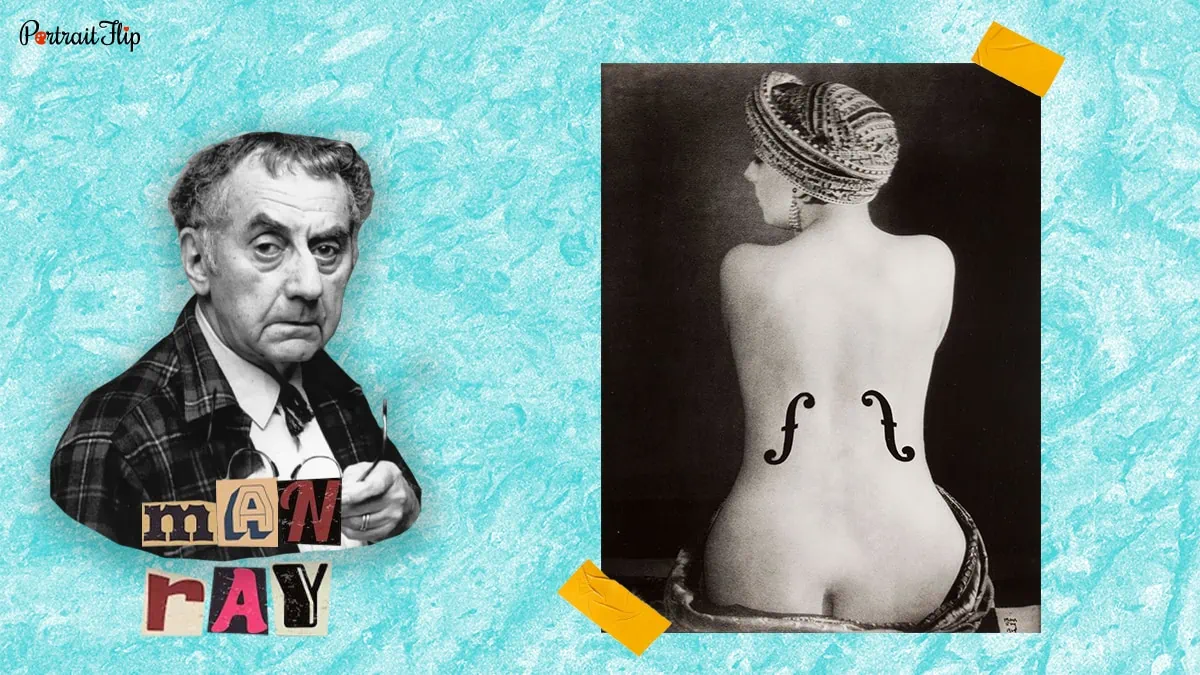
Primarily known for his photography skills, Man Ray used to incorporate both Dada and Surrealist principles into his work.
He was an immigrant who spent his entire life creating modernist paintings, photography, sculptures, and collages in Paris.
His famous work, Le Violon d’Ingres (The Violin of Ingres), is a black-and-white surrealist photograph.
Ray used Kiki de Montparnasse, who was dressed in a turban that had been turned into a musical instrument with sound holes on her back, as inspiration for Jean-Auguste-Dominique.
Man Ray was fascinated by the juxtaposition of an object and a female body.
He was honored with the title of “one of the 25 most prominent artists of the 20th century” by ART News magazine in 1999.
Also Read: 11 Famous Cubist Paintings That Show Transition In The Movement
4. Hannah Hoch, Cut with the Kitchen Knife Through the Last Weimar Beer-Belly Cultural Epoch in Germany, 1919
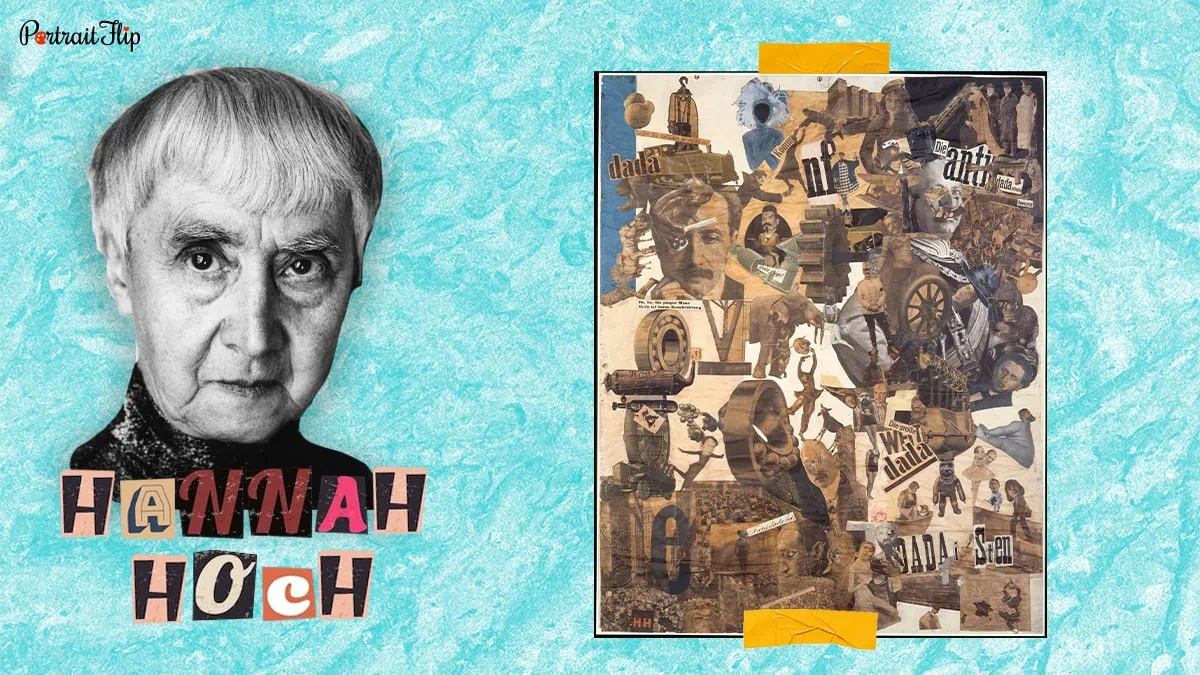
Hannah Hoch (1889–1978) was a pioneer of collage and a German photomontage artist of the 20th century.
In her creations, Hannah combined cutouts of idealistic feminine characters with hand-picked modern and vintage objects.
She promoted the concept of more women participating in general tasks in society and encouraged photomontage development as a Dadaist technique.
“Cut with the Kitchen Knife Through the Last Weimar” is one of Hoch’s earlier pieces, a unique collage made by slicing newspaper and magazines that puts together a coherent image from many portions.
Many female painters contributed anonymously to the art world, and Hannah is one of them.
Through her artwork, she used to criticize the dominant society, sometimes through her own choices.
Some famous artworks of Pablo Picasso served as inspiration for her, who layered the style with various shapes that belonged in the modern art canon.
5. Max Ernst, “Two Children Are Threatened by a Nightingale,” 1924
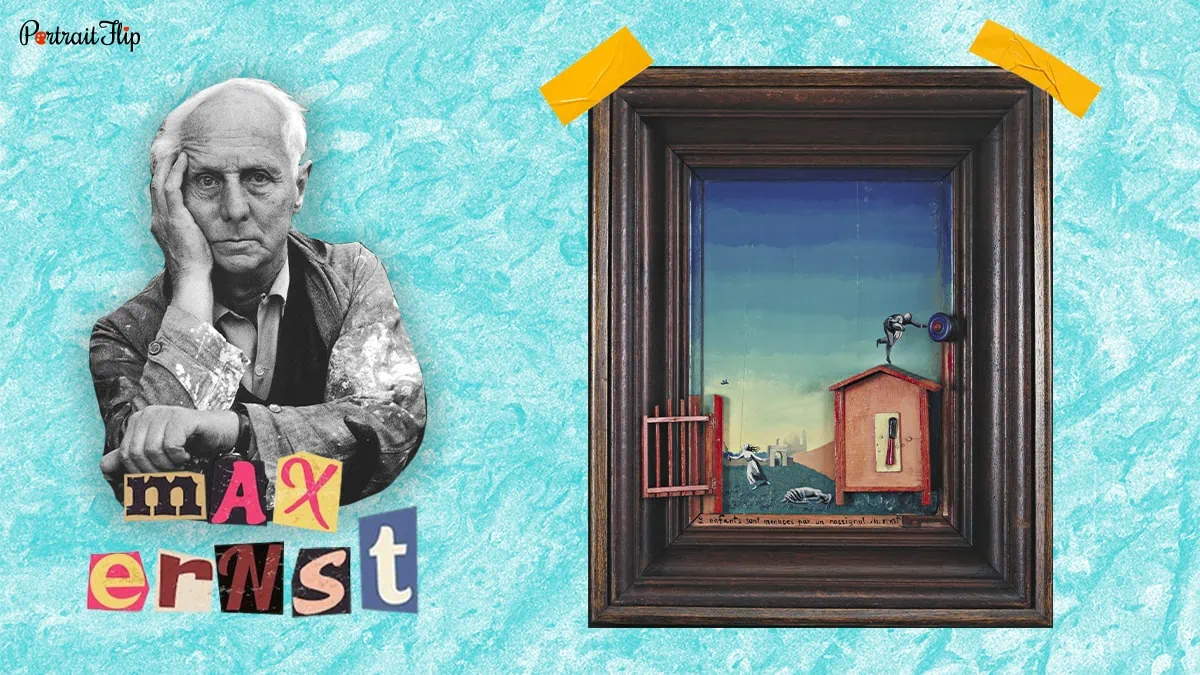
Max Ernst (1891–1976), a German painter and sculptor, was the pioneer of the Dada and Surrealism movements, which influenced many painters.
While spending half of his life in France, Ernst was classified as an enemy alien during the Second World War.
“Two Children Are Threatened by a Nightingale,” a well-known Dada painting by Ernst, portrayed a terrifying situation.
A red open fence with a clear blue sky depicts the welcoming atmosphere, whereas the white figures signify fear.
“Nightingale” here refers to his dead sister, and the other to the horror nightmare from his childhood.
He contributed a vast array of technical advances in collage, fottage, and synthetic versions, and also introduced a new form known as grattage.
6. Kurt Schwitters, Construction for Noble Ladies, 1919
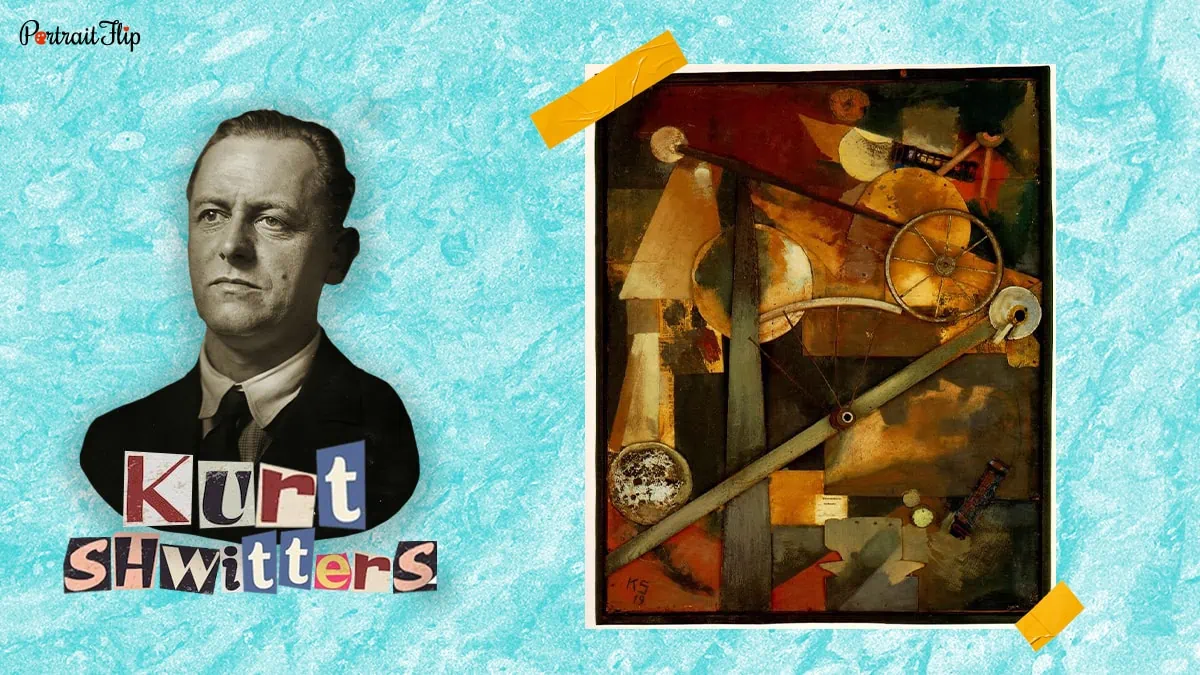
The depressed status of Germany negatively impacted Kurt’s life. Due to this, he would incorporate trash into his artwork.
He was a writer and painter who made contributions to the Dada, assemblage, and surrealist movements.
Collage and montage techniques were utilized to make artwork during the First World War that later sparked unrest and conflict around the globe.
“Construction for Noble Ladies” is one of the arts of Dadaism that depicts this style at the time.
Kurt first used the phrase “Merz” to represent his creative output and adaptability to various media and styles.
7. Francis Picabia, Very Rare Picture of Earth, 1922
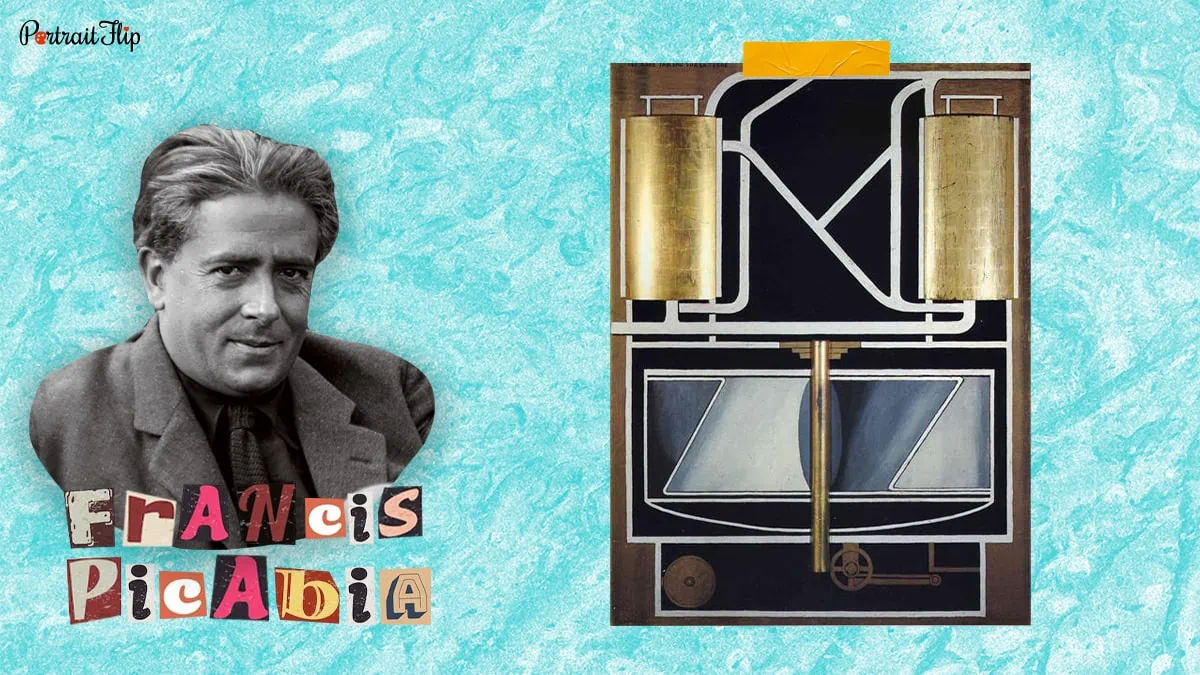
Francis Picabia (1879–1953), also referred to as “Papa Dada,” was a key figure in the Dada movement.
As a dedicated artists of Dadaism, he had investigated a wide range of conflicting genres that involved several artistic forms.
He volunteered for the proto-Dadaist journal 291 and gained fame for a variety of works, including text-based paintings that reference conceptual art and comics that feature machinery.
One of the famous Dadaism artworks, “Very Rare Picture of Earth,” features mechanical symbolism and was Picabia’s first collage.
Francis’ artwork first had sexual overtones in pictures of machines before evolving to a Cubist-inspired look in 1909.
The perspective of cubism artists was shaped by many well-known painters who served other art movements.
8. Otto Dix, Skat Players, 1920
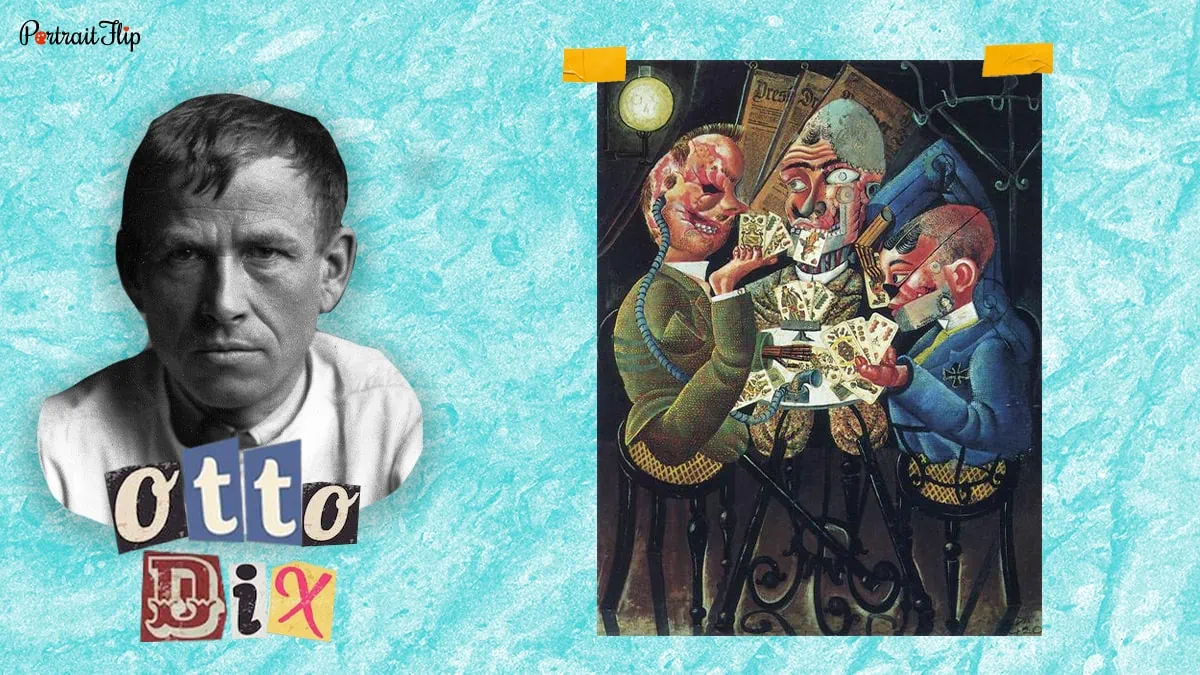
Otto Dix (1891–1969), the most important German painter and printer, is recognized for incorporating contemporary imagery into his paintings.
A big aspect of the Neue Sachlichkeit (New Objectivity) movement is shown in his Skat Players (Card-Playing War Cripples) work.
Dix uses Cubism and Dadaism art to make a strong social point about horribly deformed military soldiers who can still play cards.
Dix painted the most famous portrait in German history during the Weimar Republic.
Otto Dix created 129 paintings over his lifetime, accompanied by remarks about his creative process and the movements he supported.
9. Raoul Hausmann, The Spirit of Our Time, 1919
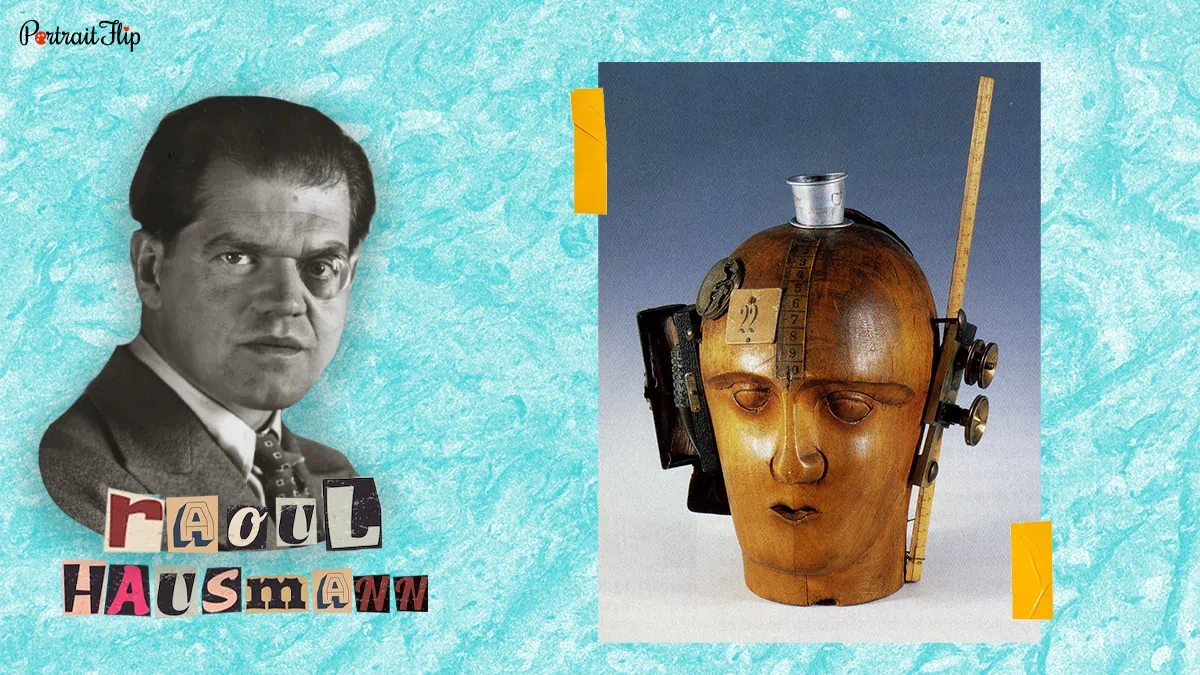
Raoul Hausmann was one of the founders of Berlin Dada.
Hausmann devised a copy-and-paste “anti-art” strategy that directly attacked the conceptual parameters that had come to separate both earlier and current avant-garde movements.
In “The Spirit of Our Time,” the metaphor for his fellow Germans during that era is demonstrated.
Hausmann illustrates through his Dadaist art that a German man has no more abilities than those that fate has cemented to the outside of his head; his brains are still empty.
Satirical photomontage and Raoul’s proactive writing about his art have made him exceptional.
10. Andre Breton, Egg in the church or The Snake, 1932
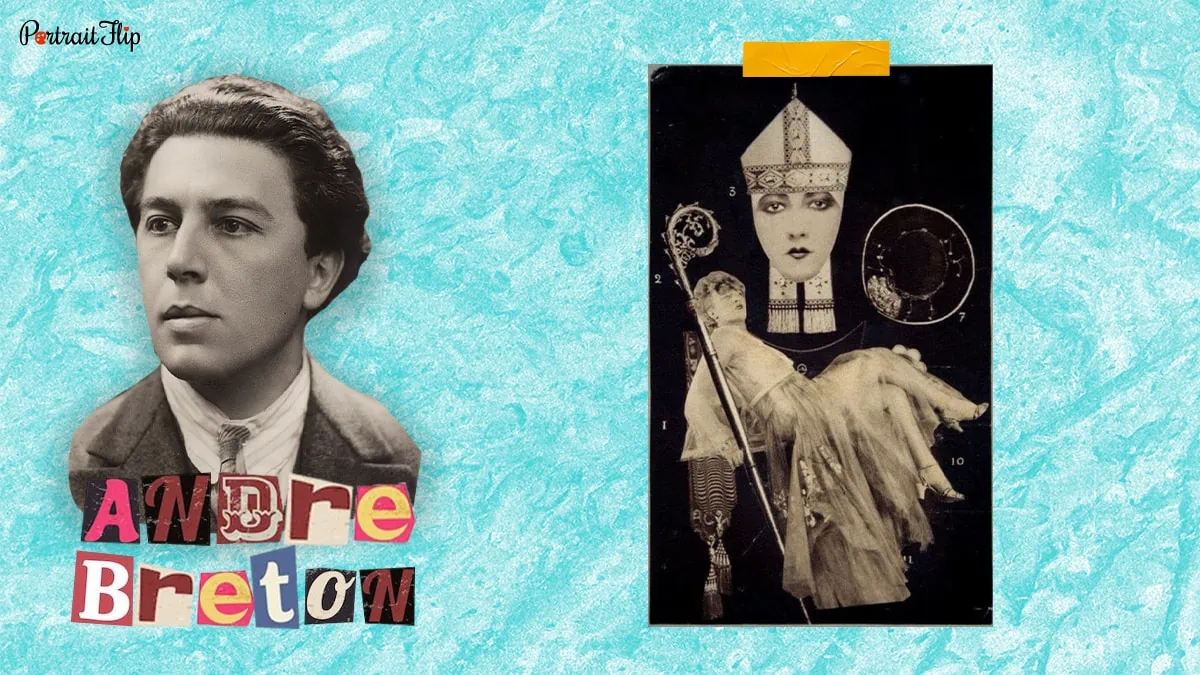
French theorist and author Andre Breton (1896–1966) engaged in a variety of Dadaist, Surrealist, and assemblage practices.
As a dedicated member of the avant-garde, Breton was renowned for his ability to bring together numerous artists through publications and creative work.
His masterwork of photographic collage, “Egg in the Cathedral or the Snake,” is an illustration of Surrealist fascination with the feminine form.
The title is both meaningful and ambiguous, while the content is enigmatic, dadaist, and surreal.
This Dadaist artist was well-known for his courage and outlandishly hilarious attitude.
He was known for his accomplishments in essays and poetry, in addition to having a lively charisma.
11. Marcel Janco, Mask, Portrait of Tzara, 1919
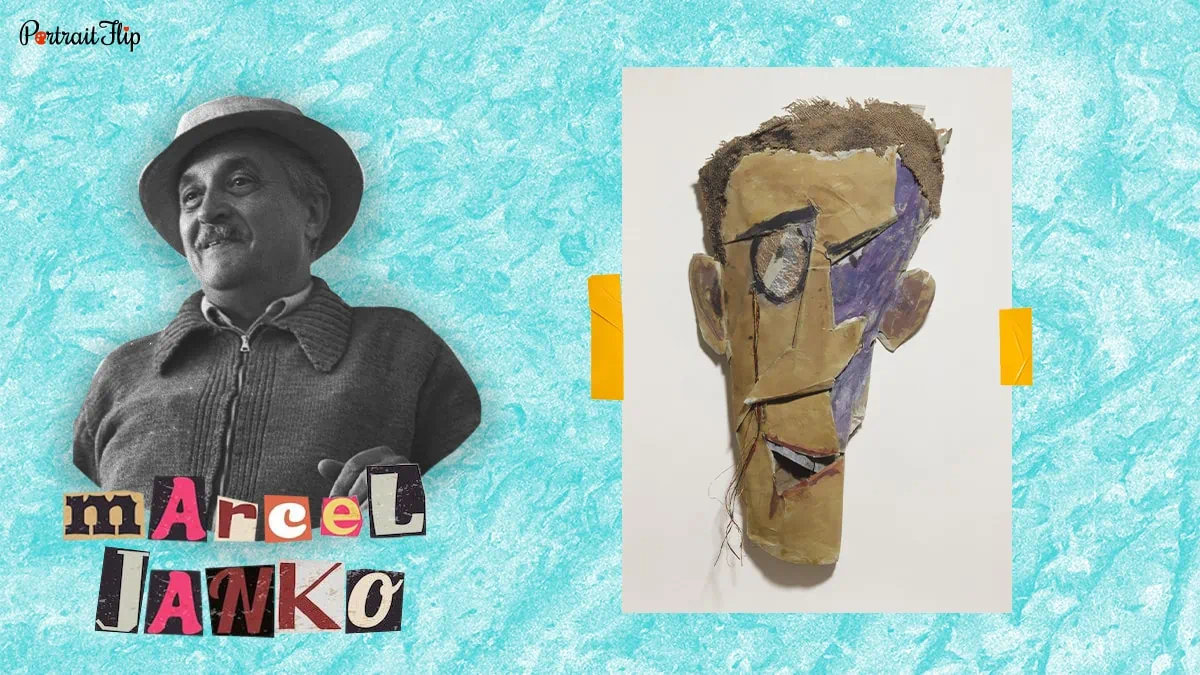
Born in Romania, the artist Marcel Janco (1895–1984) moved to Zurich and collaborated on the Dada movement with his friend Tristan Tzara.
Marcel’s “Mask, Portrait of Tzara” represents the Dada movement and the personification of the so-called “approximate man,” a concept that combines many of the movement’s elements.
The creation of strange faces that transformed the performers into criminal healers who broke numerous rules was one of Janco’s finest efforts.
After a while, Janco gave up Dada because he found it to be somewhat negative and adopted constructivism.
Through the acquisition of the most recent constructivism concepts from Romania, Janco made an important contribution to the modernization of Israeli art.
12. John Heartfield, Cover for Der Dada, “The Tire Travels the World”, 1920
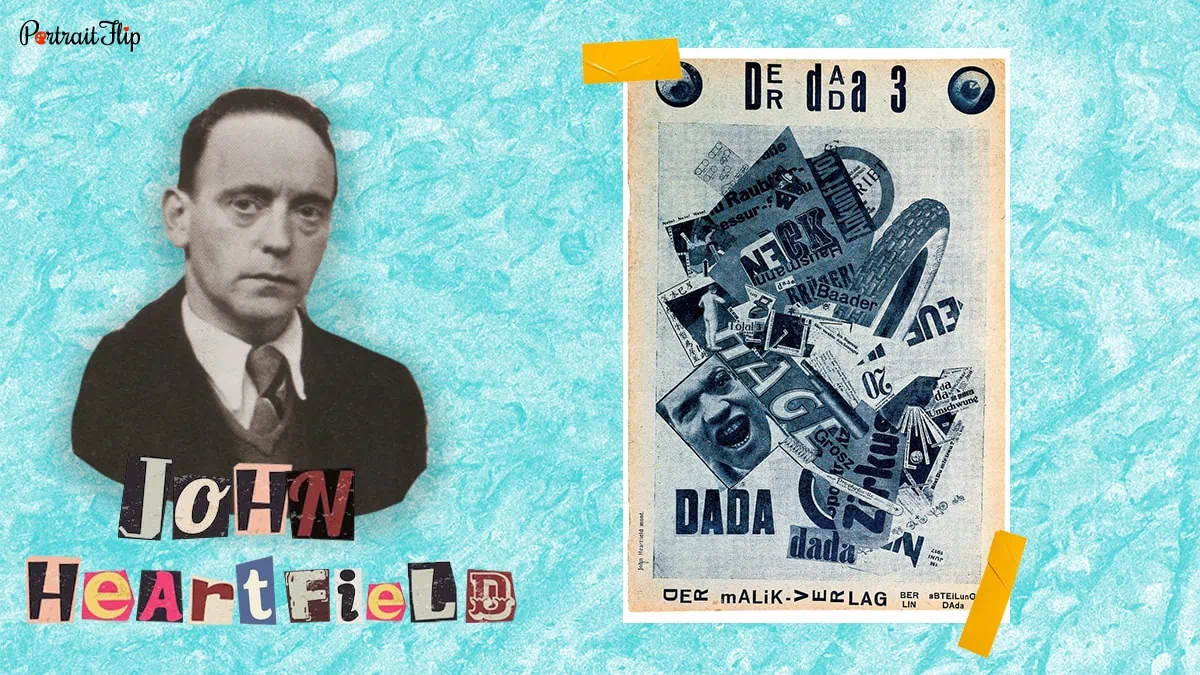
German-born graphic designer and photomontage artist John Heartfield has a great hand in Dada and Surrealist photography.
“The Tire Travels the World” was one of his photomontage artworks that depicts the action of a Republic car wheel as it drives by, smashing into old advertisements and other Dada dreck.
The goal of the Dada sequence was to stun the viewers and make them see the social and political situation.
Heartfield became prominent as an artists of Dadaism for his one-man battle against Hitler, harshly exposing him as a liar who was funded by vast companies.
Heartfield’s contribution to media art is his use of photomontage as a tool for producing alternative perspectives on reality.
13. Hugo Ball, Costume of Hugo Ball at his reciting of the Sound Poem, ‘Karawane’, 1916
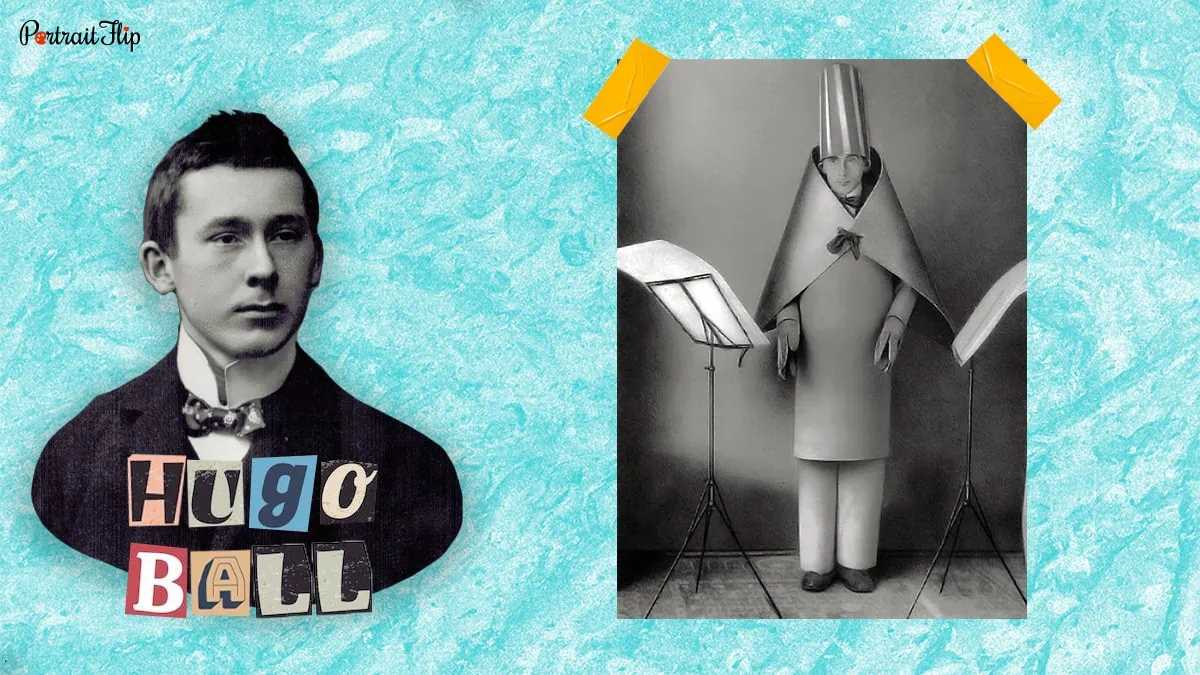
Hugo Ball, well-versed in German history, philosophy, and literature, has significantly influenced modern art.
In the “Costume of Hugo Ball at his recitation of the Sound Poem, Karawane,” Ball designed a costume out of ordinary materials to capture the bizarre and absurdist spirit of Dada.
Ball’s acoustic poetry is the best example of Dada’s ironic, absurd, and humorous yet deadly serious criticism of modern society.
He was a pioneer in the growth of creative poetry.
Hugo started the performance art venue Cabaret Voltaire, which later became the origin of the Dada movement.
14. George Grosz, A Funeral: Tribute to Oskar Panizza, 1918
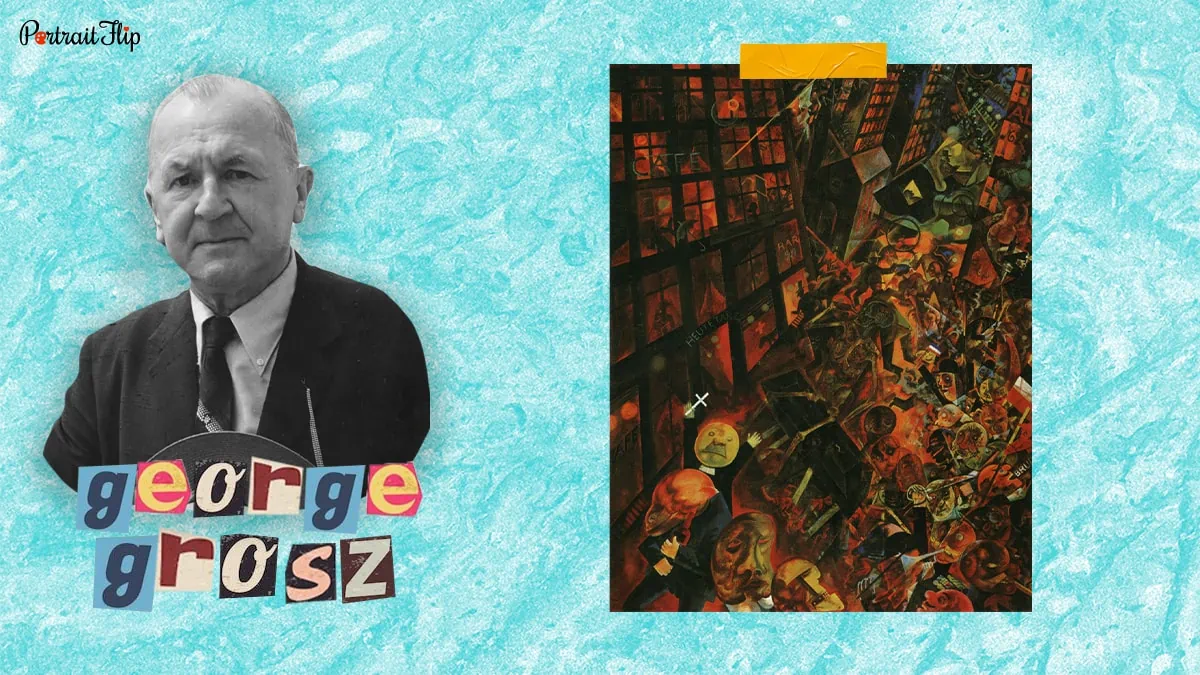
George Grosz, a German painter and draftsman, was one of the key artists of Dadaism connected to the New Objectivity movement.
As a soldier in World War I, George focused his artistic efforts on social criticism, producing paintings during several key eras while witnessing the horrors of war.
“A Funeral: A Tribute to Oskar Panizza” depicts the post-war period during which George held anger and resentment toward German society.
Darkly colored, deformed shapes with a complex, collage-like aesthetic that is influenced by cubism and futurism can be observed in the artwork.
Grosz developed his humorous talent in his early depictions of Berlin’s nightlife.
Also Read: Paintings by Kandinsky
15. Tristan Tzara, Contents, Dada 3, 1917
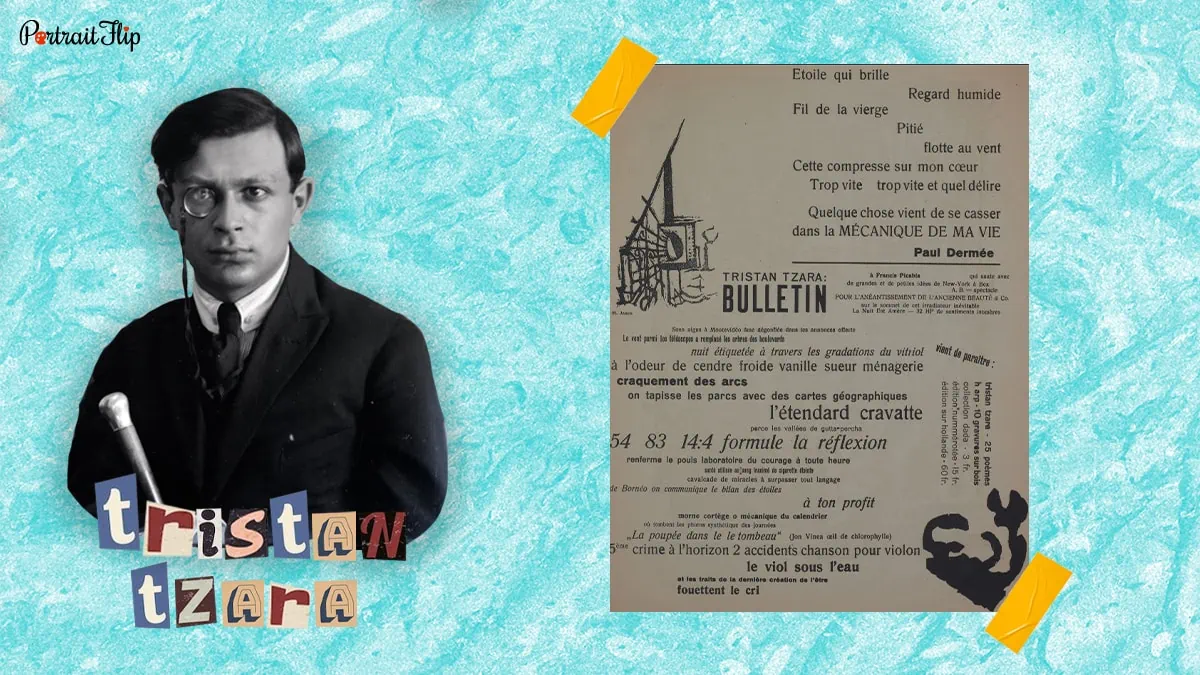
Tristan Tzara is often credited with founding Dada, a negative, anti-art movement that was established in Zurich during World War I.
Tzara put a lot of effort into popularizing Dada, creating the Dadaglobe project to compile works by artists of Dadaism worldwide.
The main contributions were manifestos he composed and distributed to as many people as he could, describing the objectives of Dada.
Pieces of previously printed material were put together in such a way that they appeared to join together to produce an artwork using the “cut-up” technique pioneered by Dada 3.
Dadaist artists all share the same concept of compiling objects, fragments, or words and arranging them on the page in a way that challenges the viewer to connect the dots.
Lastly,
“DADA, as for it, it smells of nothing, it is nothing, nothing, nothing.”
– Francis Picabia
Hey Folks!
Thank you for reading my blog, “Artists of Dadaism: Dada Art, Contributions, and Achievements.”
If you have any additional points about this article, please share them with us in the comment section below.
We will be happy to acknowledge your thoughts on this writing.
Visit our replica painting gallery, where we recreate famous works of art such as the Mona Lisa and The Starry Night!
Wanna know how,
FAQs
Dadaism is famous for depicting images that does not give a sense or meaning, in other words an “anti-art movement.”
The leading artists of Dadaism include Marcel Duchamp, Arp, Kurt Schwitters, and Francis Picabia.
Dada movement artists rejected logic, reason, and modern society and started expressing irrationality, nonsense in their work, which resulted in the formation of Dadaism.
The Dada Manifesto was the first short text written on July 14, 1916, by Hugo Ball.





